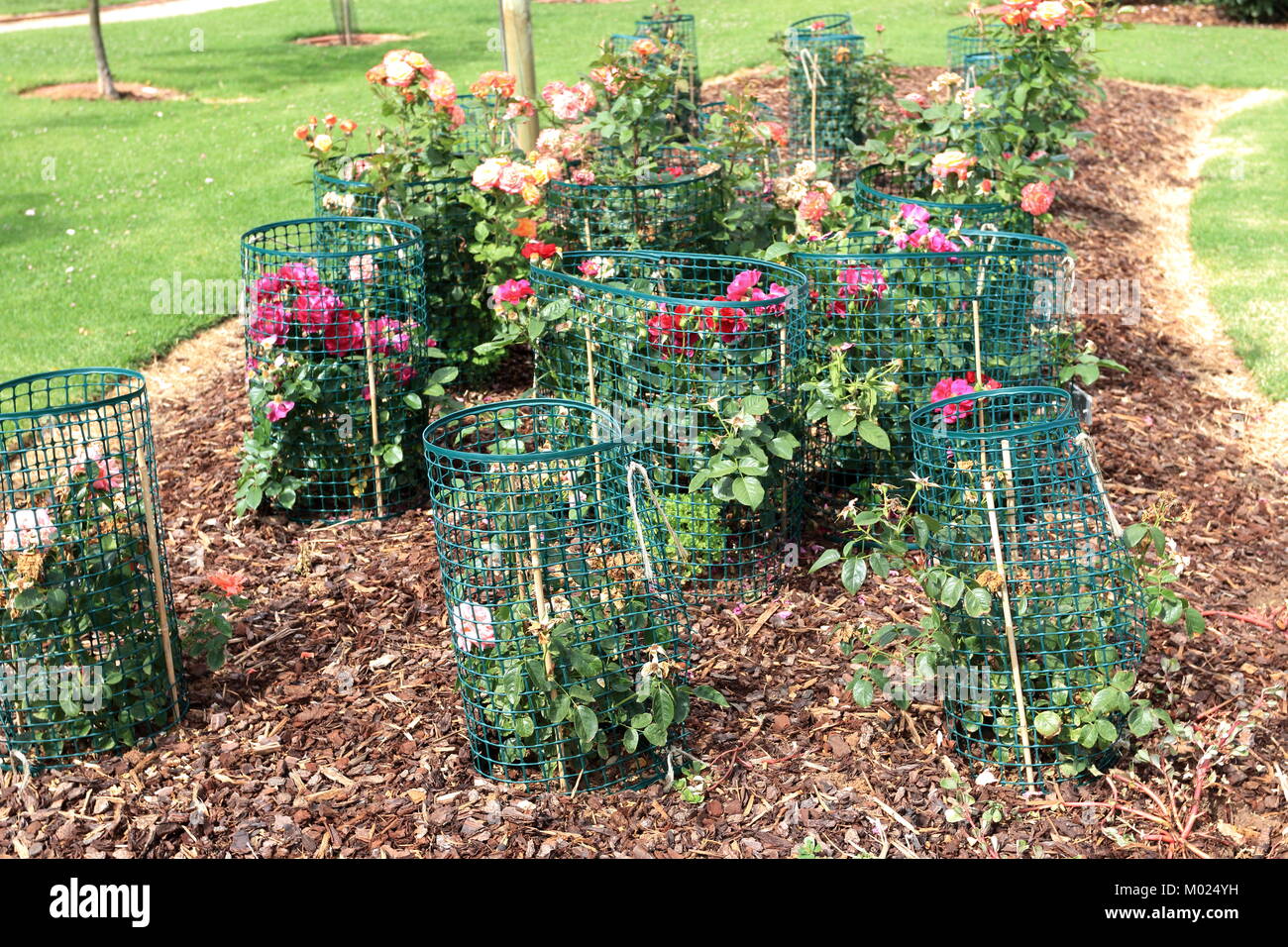How to Protect Rose Plant
To protect your rose plant, you’ll need to water it regularly, fertilize it properly, and prune it regularly. You should also choose the right kind of rose for your climate.
- Select a sunny location: Roses need at least six hours of direct sunlight each day in order to thrive
- Avoid planting them in shaded areas, as this can encourage fungal growth and make the plants more susceptible to disease
- Prepare the soil: Roses require well-drained, nutrient-rich soil in order to grow properly
- Add organic matter such as compost or manure to the planting area before you add your roses
- Mulch around the plants: This will help keep the roots cool and moist, and also prevent weeds from competing with the roses for moisture and nutrients
- Use an organic mulch such as bark chips or straw
- Water regularly: Roses need to be watered deeply and regularly during their growing season (spring through fall)
- They should be given about 1 inch of water per week, either from rainfall or irrigation
- Be sure not to over-water, as this can lead to problems such as root rot
- Fertilize monthly: Use a balanced fertilizer formulated for roses, and apply it according to the package directions during the plant’s active growing season (spring through summer)
- Avoid fertilizing late in the season, as this can encourage new growth that is likely to be damaged by winter weather conditions
TOP 5 ROSE GARDENING SECRET TIPS | Best Fertilizer For Rose Plant & Care Tips
How Can I Protect My Rose Plant from Pests
There are a few things you can do to protect your rose plant from pests. First, make sure to keep your rose plant well-watered. This will help to keep the leaves from drying out and becoming an easy target for pests.
Next, regularly check your rose plant for signs of pests, such as small holes in the leaves or webbing around the stems. If you see any sign of pests, immediately isolate the affected plant from the rest of your garden. Finally, treat your rose plant with an organic pesticide or insecticide on a regular basis, especially during the growing season.
By following these simple steps, you can help to keep your rose plant healthy and free from pests!
What are Some Common Diseases That Affect Rose Plants
There are a few common diseases that affect rose plants. Black spot is a fungus that appears as black spots on the leaves. Powdery mildew is another fungus that appears as a white powdery substance on the leaves.
Both of these diseases can be treated with fungicide. Rose mosaic virus is a virus that causes the leaves to have a mottled or yellow appearance. There is no treatment for this disease and it can eventually kill the plant.
What Insects Should I Be Concerned About When Trying to Protect My Rose Plant?
When it comes to protecting rose plants from insects, there are several common culprits that gardeners should be concerned about Aphids, for example, can quickly infest rose plants, sucking the sap and causing curling leaves Other bothersome insects include spider mites, thrips, and Japanese beetles, which can chew on the leaves and destroy the flowers It’s important to stay vigilant and employ preventive measures like regular inspections, organic insecticides, and beneficial insects to keep these pests at bay
How Can I Keep My Rose Plant Healthy And Vigorous
There are a few key things you can do to keep your rose plant healthy and vigorous. First, make sure you plant it in an area that gets full sun. Roses need at least 6 hours of sunlight each day to thrive.
Second, be sure to water your rose regularly. Water deeply so that the roots get plenty of moisture. Third, fertilize your rose every 4-6 weeks with a good quality fertilizer specifically designed for roses.
fourth, prune your rose regularly to encourage new growth and prevent disease. Fifth, monitor your rose for pests and diseases and take action immediately if you see any problems. By following these simple tips, you can enjoy beautiful, healthy roses for many years to come!

Credit: www.alamy.com
Conclusion
In order to protect your rose plant, you will need to water it regularly and make sure that the soil is moist but not soggy. You should also fertilize your plant every two weeks using a half-strength fertilizer solution. Additionally, you will need to prune your plant regularly in order to encourage new growth.
Finally, you should mulch your plant in order to help retain moisture and keep the roots cool.
